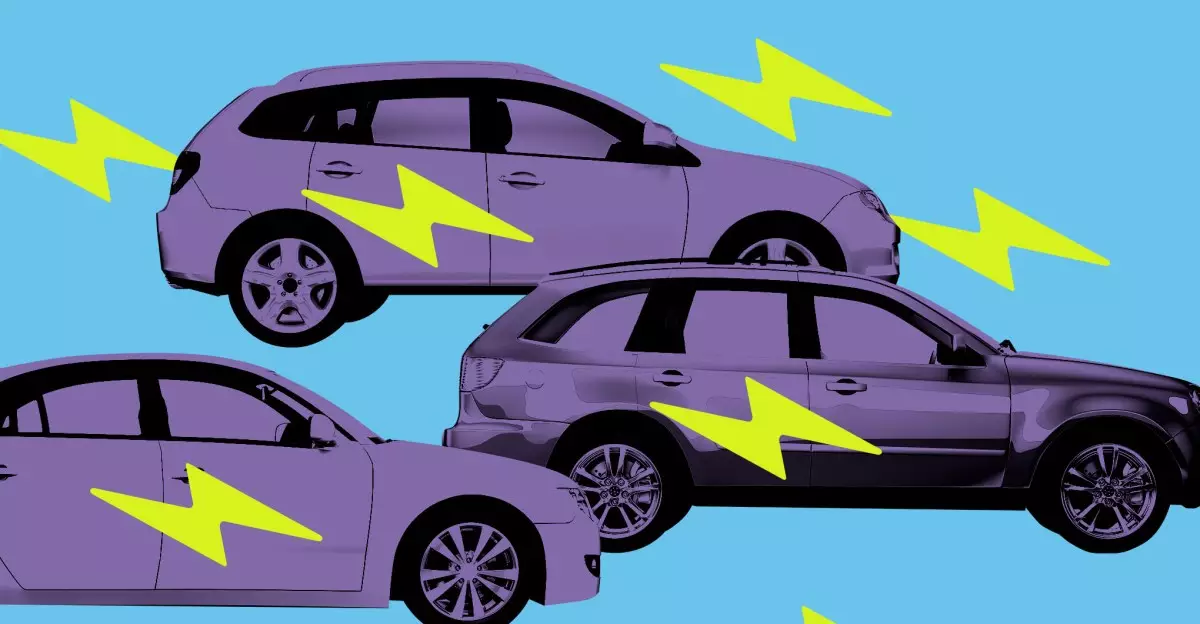In an era where technology dominates our lives, the intersection of driving behavior and real-time monitoring presents an unprecedented opportunity for enhancing road safety. The latest study from the AAA Foundation for Traffic Safety reveals a compelling case for the effectiveness of smartphone apps that track driving habits. These innovative tools hold the potential to foster a safer driving culture, incentivizing responsible behavior while addressing the often-overlooked psychological aspects of driving.
The findings advocate for a shift in how we perceive driving and accountability. By utilizing real-time data, not just static statistics, we can substantially reduce risky behaviors such as speeding, rapid acceleration, and hard braking. Such behaviours have widely been linked with fatal accidents, leading to the staggering statistic of over 40,000 fatalities on U.S. roads in 2023 alone. It’s evident that traditional methods of incentivizing safe driving are insufficient; a modern approach is imperative.
The Power of Personalized Feedback
One of the most striking aspects of the AAA study is its emphasis on personalized feedback mechanisms. The experiment divided a group of 1,400 participants into four distinct segments: a control group and three others receiving varying types of feedback. The participants who received distinct behavioral reports demonstrated significant improvements—13% reduced speeding, 21% cut back on hard braking, and 25% modified their acceleration patterns.
This nuanced feedback led to a transformation in their driving habits, illustrating the effectiveness of direct, actionable information. The implications for automotive safety and driver accountability are staggering, as drivers can now be encouraged toward safer patterns through engaging prompts rather than punitive consequences. People respond to positive reinforcement, and this study corroborates that assertion strongly—drivers, even after the study data was turned off, generally maintained their safer habits.
The Reluctance to Be Monitored
Despite the benefits of being monitored, many drivers remain averse to the concept, suspicion rooted in the belief that surveillance equates to a loss of privacy. The hesitance stems largely from concerns regarding usage-based insurance (UBI), which typically uses tracking data to set insurance premiums. Participants in the AAA study, however, reported feeling reassured that their data would not influence their insurance rates but instead contribute to improved driving behavior.
Changing this narrative is crucial in the movement toward safer driving culture. By framing the conversation around the merits of real-time monitoring as a tool for empowerment rather than a mechanism of control, insurers and researchers can foster a sense of community ownership over road safety.
The Long-Term Impact of Behavioral Change
Post-study monitoring revealed that participants generally retained their improved driving habits even six weeks after receiving no feedback. What this suggests is that while initial motivations stem from external influences, the long-term change can arise from an internalized desire to adhere to safer driving practices. The psychological aspect of understanding one’s driving behavior has the power to shift mindsets, making individuals more aware of their road actions and responsibilities.
Jake Nelson, AAA’s director of traffic safety advocacy, underlined this sentiment by stating that “positive reinforcement, not just punitive measures, can lead to safer driving habits that can save lives.” This notion must be incorporated into broader educational and promotional campaigns aimed at instilling safe driving practices.
The Future Potential of Driving Apps
With smartphone applications now commonplace in monitoring various aspects of our lives, whether fitness or health metrics, it seems only logical to incorporate this technology into driving behaviors. As more people become accustomed to real-time data tracking in other realms, the integration of driving safety features is both timely and potentially revolutionary.
The growth of UBI programs indicates a rising acceptance; the percentage of auto insurance shoppers enrolling in UBI programs has increased from 12% in 2020 to almost 20% as of 2024. This growing trend underscores that consumers are beginning to embrace tracking as a condition for achieving better outcomes, including reduced insurance costs.
This connection between technological progress and road safety lays the groundwork for future advancements. For instance, the implementation of predictive analytics could offer deeper insights into driver behavior, enabling more focused interventions that adapt to individual driving styles and conditions.
The marriage of technology and safety isn’t merely a trend; it’s a necessary evolution in the way we navigate our roads. Adopting these strategies is imperative for a proactive approach to driving safety, positioning both individuals and insurance frameworks towards a future defined by responsibility, awareness, and ultimately, lives saved.

